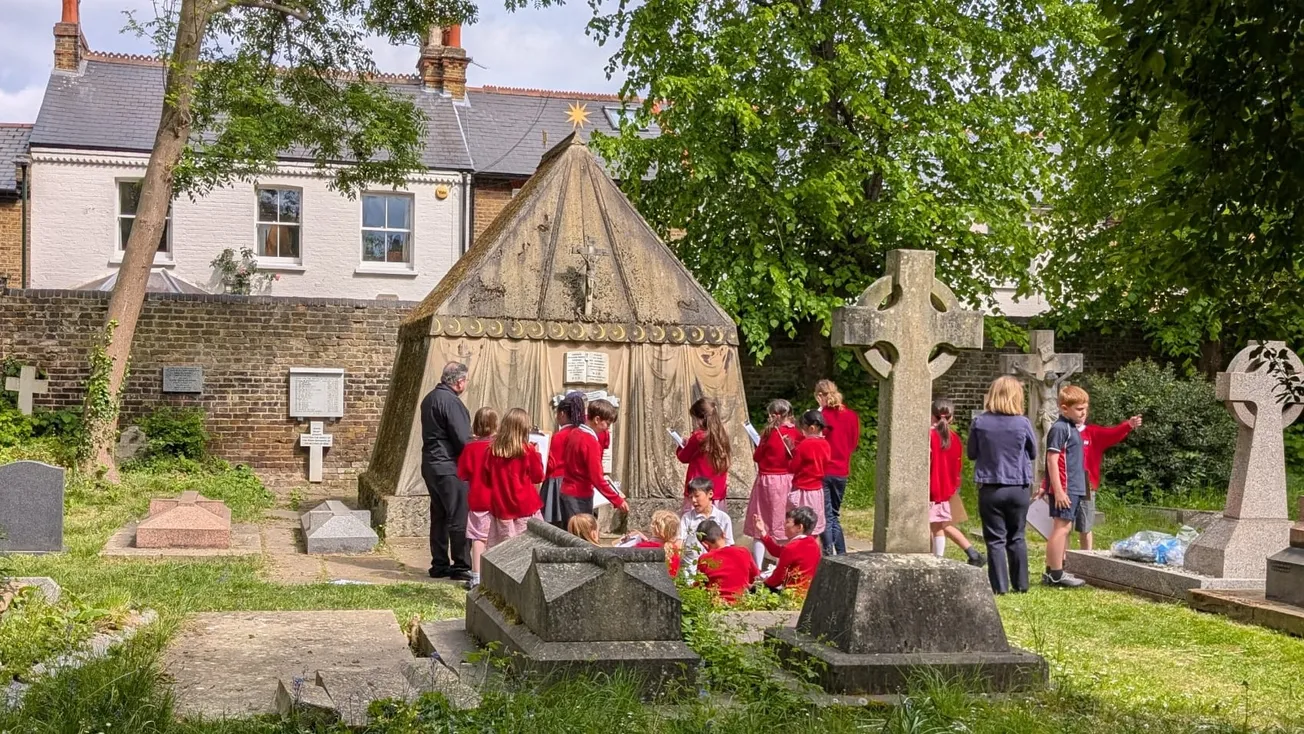Hello! It's Hannah, your editor here. To read the entirety of today's piece on Victorian explorer and certified horndog Sir Richard Francis Bacon, you'll have to be a paying supporter of The Londoner. We do this because researching and reporting our stories takes a large amount of time and resources, and we need to become financially sustainable. We aren't backed by billionaires or private equity firms — so it's only through reader subscriptions that we can continue to exist.
You’re reading this because you’re currently one of our nearly 23,000 beloved free subscribers. But if you like what we're doing, if you think it’s important, both for you and for London, consider backing us for just £4.95 a month for the first three months. Becoming a supporter puts you at the vanguard of a media revolution, as well as giving you access to all of our members-only content — like the story below.
In a small parish in south west London lies a grave — not just an ordinary headstone, but a mausoleum. Made from sandstone pleated into the shape of a Bedouin tent, and fronted with a large crucifix and a string of crescent moons, it is by far the strangest thing in the cemetery. It's even something of a local landmark: Mortlake’s answer to the Taj Mahal. Here lies Sir Richard Francis Burton, one of Victorian England's foremost explorers — and one of its most scandalous.
In his day, he was famous for charting Central Africa and writing books on geography, but also for converting to Islam, visiting male brothels and translating the Kama Sutra. Unsurprisingly, Burton often found himself at odds with the establishment. Her Majesty’s government didn’t take kindly to his antics, and as a diplomat he was often packed off to far-away colonial outposts. Some even argue that his burial in Mortlake is a form of exile, a post-mortem snub for a man who should have really been interred in Westminster Abbey, where many — not least his wife — felt he belonged, alongside other intrepid men-of-destiny like Ernest Shackleton and David Livingstone.
On a bright Monday morning, however, this site of exile and neglect is buzzing. Surveyors stalk the perimeter, looping tape around metal posts and passing down buckets from rope-pulleys, while a nearby group of school children clutch sketches and chalk reliefs of the tomb’s decorations and inscriptions. Abandoned to the elements since it was vandalised in the 1950s, today, the tomb is receiving the final touches of its makeover, a limestone wash overseen by charity Habitats & Heritage (H&H) and carried out by Cliveden Conservation.

Comments
How to comment:
If you are already a member,
click here to sign in
and leave a comment.
If you aren't a member,
sign up here
to be able to leave a comment.
To add your photo, click here to create a profile on Gravatar.





